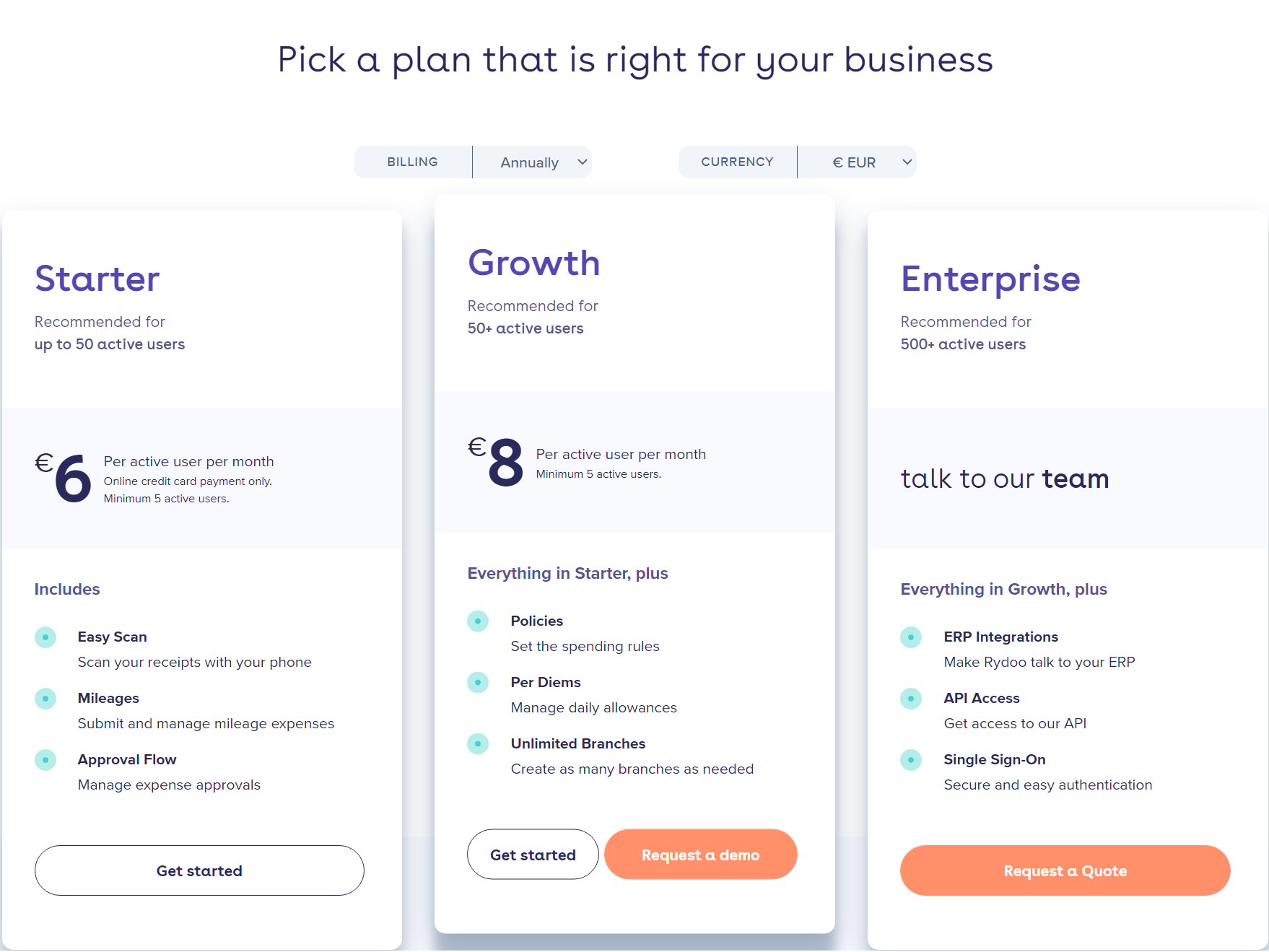This Rydoo pricing section is effective for several reasons:
1. Clear Hierarchy and Visual Appeal:
- Headline Focus: “Pick a plan that is right for your business” directly addresses the user’s need and emphasizes personalization.
- Tiered Structure: “Starter,” “Growth,” and “Enterprise” tiers are clearly labeled and visually separated.
- Visual Cues:
- The pricing is prominently displayed with a clear “per active user per month” format.
- The “Get started,” “Request a demo,” and “Request a Quote” buttons are visually distinct and consistent.
- The “Everything in [Previous Tier], plus” structure clearly shows the progression of features.
- The use of icons next to feature descriptions adds visual clarity.
- Layout: The layout is clean, organized, and easy to follow, with consistent formatting.
2. Value-Based Differentiation:
- Target Audience: Each tier is tailored to different user groups based on their team size (up to 50 users, 50+ users, 500+ users).
- Feature Progression: The feature lists clearly outline the increasing capabilities of each tier, showcasing the added value of higher plans.
- Benefit-Oriented Descriptions: The descriptions focus on the benefits each tier provides (e.g., “Easy Scan,” “Policies,” “ERP Integrations”).
3. Transparent Pricing (Partial):
- Clear Pricing for Some Tiers: The “Starter” and “Growth” tiers have clear per-user monthly prices.
- Quote-Based Approach for Enterprise: The “Enterprise” tier uses “talk to our team” and “Request a Quote,” indicating a more customized pricing approach.
- Minimum User Requirement: The mention of “Minimum 5 active users” provides clarity on the minimum commitment.
- Billing and Currency Options: The “BILLING” and “CURRENCY” dropdowns allow users to customize their view.
4. Addressing Different User Needs:
- Tier Names: The tier names are intuitive and suggest a progression in features and capabilities.
- Feature Availability: The feature availability caters to different needs, from basic expense management to advanced integrations and enterprise-level features.
- User Limits: The clear indication of user limits helps users choose the appropriate tier.
5. Strategic Use of Information:
- Benefit-Driven Headline: The headline directly addresses customer needs and highlights value.
- Clear Call to Action: The “Get started,” “Request a demo,” and “Request a Quote” buttons provide clear and immediate paths for action.
- Feature Highlights: The inclusion of specific features like “ERP Integrations” and “Single Sign-On” highlights key benefits for target users.
- “Everything in [Previous Tier], plus” Structure: This structure clearly shows the added value of higher tiers.
- Visual Clarity: The use of icons next to feature descriptions adds visual clarity and makes it easier to understand the offerings.



